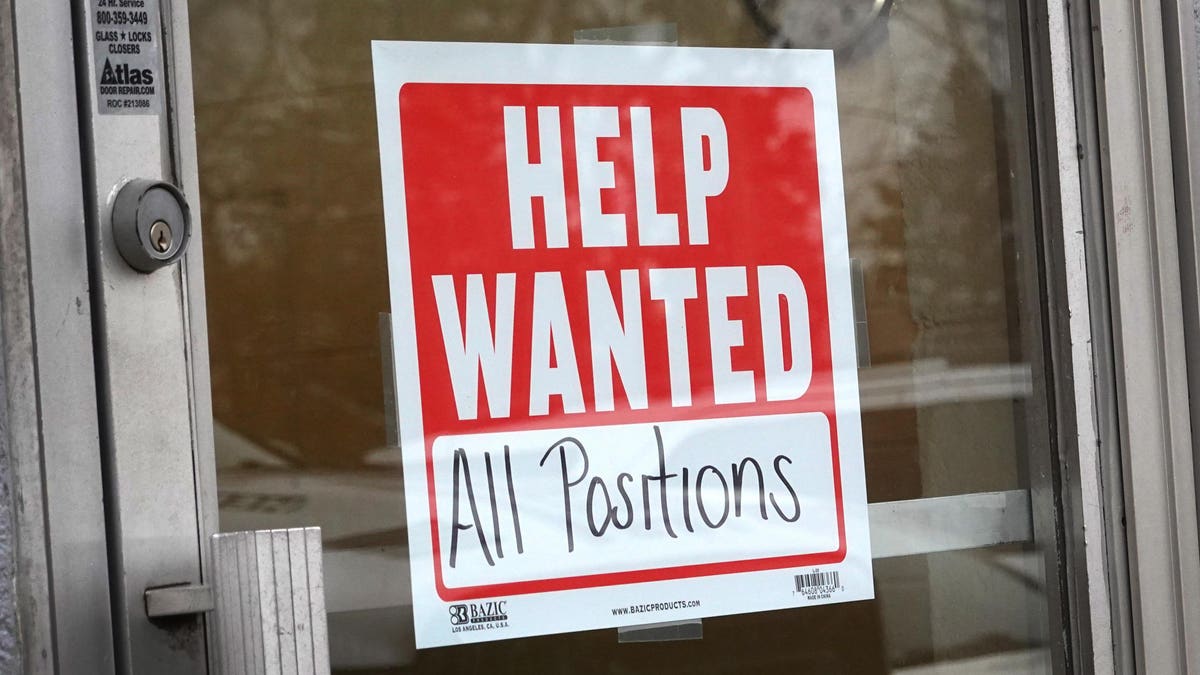Topline
Attention toward the labor market may be peaking as a stream of data offer breadcrumbs as to how the Federal Reserve may proceed in its interest rate hike crusade, but this very data may be more flawed than ever, according to economists.
Key Facts
The Labor Department’s Job Openings and Labor Turnover Survey (JOLTS) is overestimating the number of job openings in the U.S. by as much as 300,000, a Goldman Sachs group led by economist Jan Hatzius wrote in a Wednesday note to clients.
JOLTS, a monthly poll of employers long viewed as one of the most important reports on the labor market, has suffered from a roughly 50% reduction in its response rate since early 2020 as remote and hybrid jobs surged in popularity, Goldman noted; the survey’s standard error is now 90% higher than it was between 2002 and 2013.
The “upward bias from nonresponse” likely explains why the number of job openings reported far exceed similar measures reported by surveys with a heavier remote presence, according to the bank, suggesting JOLTS should be viewed “less like the ‘true’ level of job openings and more like another series to be viewed in conjunction with a suite of job openings metrics.”
JOLTS is not the only long-trusted labor market measure facing questions about its reliability: Economists have expressed skepticism about the Labor Department’s weekly update on initial jobless claims, a strong predictor for the headline unemployment rate, this week.
In a Tuesday note, Bank of America economists Stephen Juneau and Michael Gapen declared something was “fishy” about last week’s initial jobless claims report, which revealed the largest increase in unemployment in nearly two years, attributing the rise in claims to fraud in Massachusetts and declaring it’s appropriate to take “less signal” from the reading.
The latest weekly jobless claims update released Thursday morning revealed a staggering 8% week-over-week decline to 242,000, well below economist estimates of 251,000.
Crucial Quote
The bottom line is that right now we don’t know for sure what’s happening to initial claims, but we do have plenty of other evidence…that the labor market is weakening,” Pantheon Macro chief economist Ian Shepherdson wrote Thursday, pointing to alleged fraudulent claims in Kentucky in addition to Massachusetts. “When the dust finally settles in the claims numbers, we expect a clear and sustained upward trend for the foreseeable future,” Shepherdson forecasted.
Key Background
The Covid-19 pandemic upended the job market in unprecedented ways. Weekly jobless claims peaked at over 6 million in April 2020, nearly 10 times as high as the pre-2020 record of 665,000. But the labor market roared back after the initial shock, as the unemployment rate slipped to a multi decade low earlier this year and wages surged to an all-time high. High employment and high pay sure seem like a positive for American workers, but the Fed has cited the tight labor market and surging wages as major contributors to high inflation. Fed Chairman Jerome Powell has clamored for a significant “softening” in the labor market to justify a pullback in monetary policy. Despite a flurry of buzzy layoffs at large companies such as Amazon, Meta and Microsoft, the unemployment rate has been little changed over the last year, oscillating between 3.4% and 3.7%.
Jobs Report Better Than Expected: Labor Market Adds 253,000, Unemployment Ticks Down To 3.4% (Forbes)
Job Openings Slipped in March as Labor Market Continued Cooling (New York Times)
Read the full article here













